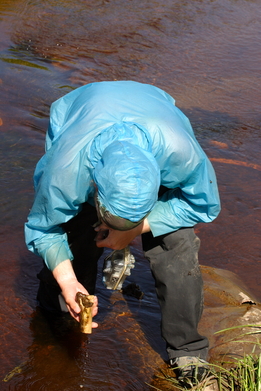River Bone Collection, Thomas Evans – Montana State University
|
To preserve modern ecosystems often managers attempt to make management decisions based on the ‘pristine’ condition of the system. Usually it is assumed this pristine condition is the state before humans altered the landscape and the flora and fauna on it. This requires a historical data set, either of a paleontological or archaeological nature, one that is mostly comprised of skeletal material deposited in river sediments. My project seeks to identify the fidelity of the terrestrial vertebrate fossil or archaeological record and provide analysts with tools they can use to interpret historical faunal records. With a better understanding of historical communities, more informed management decisions can be made to facilitate the recovery of damaged ecosystems.
Volunteers would be asked to record data on bones they find in rivers, including; orientation, burial, geomorphology, and deposition related information. If possible, photographs would be requested, as well as collection of bones if it is possible. Usually data acquisition is fast (2-3 minutes per bone), and requires little training to accomplish accurately. Volunteers are encouraged to work in water that is shallow, slower moving, and ‘safe’. I will use the data generated to generate a bone transport and deposition model in river systems, and test hypotheses generated in other ways (through flume trials or river seeding experiments). Ultimately I will generate historical data analysis tools that other researchers can use. Most people do not spend much time looking at the bed of rivers (it seems esoteric), but spending a little extra time looking deeply in rivers can be both enjoyable and cathartic. When most of us recreate we move through the back country quickly, and this project gives you a moments pause to just enjoy the scenery and the beautiful rivers that flow through it. To Participate in this project, Tell Us About Your Expedition Here |

